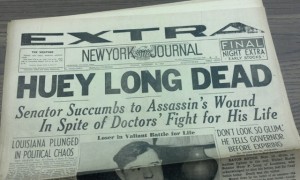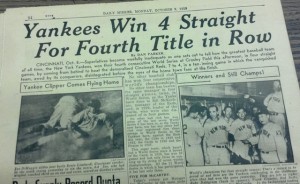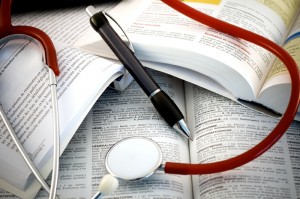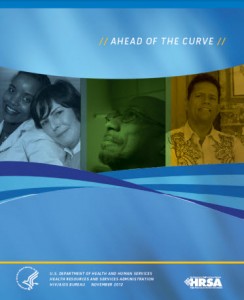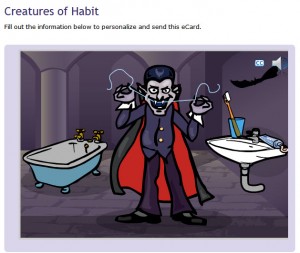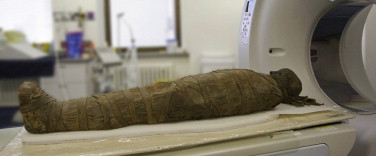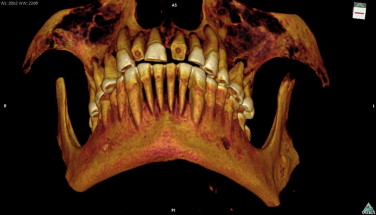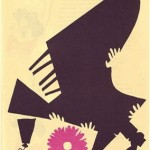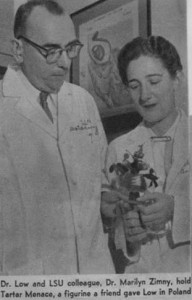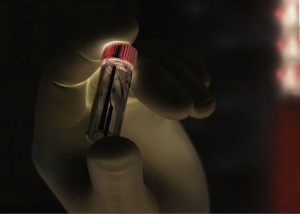New Year Opens with Faculty Research
 On display at the Library during January are eight new faculty publications by LSUHSC-NO researchers. These can be physically viewed in the Reference area (near the?áLibrary elevator), on the third?áfloor of the Resource Center Building. These items are also part of the LibraryÔÇÖs Faculty Publications Database.
On display at the Library during January are eight new faculty publications by LSUHSC-NO researchers. These can be physically viewed in the Reference area (near the?áLibrary elevator), on the third?áfloor of the Resource Center Building. These items are also part of the LibraryÔÇÖs Faculty Publications Database.
The Faculty Publications Database includes publications authored by at least one member of the LSUHSC-New?áOrleans faculty, 1998 ÔÇô present. Access to this database is available to the public. The database is linked from the Library web page?áhere. This page includes a handy link to a?áPDF?áof the monthly bibliography of display articles. To add your faculty publications, or for questions about this database, contact?áKathy Kerdolff.
LSUHSC-NO authors are shown in bold print:
1.?áGarbee DD, Paige JT, Bonanno LS, Rusnak VV, Barrier KM, Kozmenko LS, Yu Q, Cefalu JE, Nelson TK.?á”Effectiveness of teamwork and communication education using an interprofessional high- fidelity human patient simulation critical care code.” Journal of Nursing Education & Practice. 2013; 3(3): 1-12.
2.?áEllis Jr. GS, Pritchard CH, Baham L, Babiuch A.?á”Medial rectus surgery for convergence excess esotropia with an accommodative component: A comparison of augmented recession, slanted recession, and recession with posterior fixation.” American Orthoptic Journal. 2012; 62(1):50-60.
3.?áHe H, Mahnke AH, Doyle S, Fan N, Wang C-, Hall BJ, Tang Y-, Inglis FM, Chen C, Erickson JD.?á”Neurodevelopmental role for VGLUT2 in pyramidal neuron plasticity, dendritic refinement, and in spatial learning.” Journal of Neuroscience. 2012; 32(45):15886-15901.
4.?áIyengar AS, Loupe JM, Miller PJ, Hollenbach AD.?á”Identification of CK2 as the kinase that phosphorylates Pax3 at Ser209 in early myogenic differentiation.” Biochemical & Biophysical Research Communications. 2012; 428(1):24-30.
5.?áKelly BL, Singh G, Aiyar A.?á”Molecular and cellular characterization of an AT-hook protein from leishmania.” PLoS One. 2011; 6(6):e21412 (1-14).
6.?áPacifici M, Peruzzi F.?á”Isolation and culture of rat embryonic neural cells: A quick protocol.” Journal of Visualized Experiments. 2012; (63):e3965 (1-5).
7.?áRosenkrantz AB, Deng FM, Kim S, Lim RP, Hindman N, Mussi TC, Spieler B, Oaks J, Babb JS, Melamed J, Taneja SS. “Prostate cancer: Multiparametric MRI for index lesion localization–a multiple-reader study.”?áAJR – American Journal of Roentgenology. 2012; 199(4):830-837.
8.?áSingh S, Yosypiv IV, Iorember FM.?á”Disseminated mycobacterium avium complex infection in a pediatric renal transplant recipient.”?áClinical Pediatrics. 2012; 51(9):892-895.

 myLSUHSC
myLSUHSC